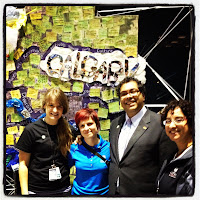Finally a topic no longer specifically related to a
psychology case study!
Although psychology is deeply entrenched in behavioral
research and obviously important to consider during any community based social
marketing, it was refreshing for me to find a direct relationship with what I
do for work, and the work of Dr. Doug Mckenzie-Mohr.
I have started reading Mckenzie-Mohr’s Social Marketing to
Protect the Environment as a follow up to his previous work, Fostering Sustainable
Behavior, and the quality of information found within the pages of this book
has been invaluable to my potential thesis work. I thought this might be one of
the best additions to my literature review, and then we were directed to
several websites in class.
This is a resource I welcomed with open arms! There are
almost 1500 articles pertaining to community based social marketing, and within
these are case studies about waste, the introduction of new curbside collection
programs, and how to identify barriers and bridges to participation in these
programs.
The forums were also a source of innovation, inspiration,
and project sharing. I’m looking forward to taking a peruse through these when
I can afford to allot time to do so. A project that captured my attention was a
woman looking to start a recycling center in Uganda. This web resource really
spans the world, and community based solutions can connect people and the
environment in engaging and meaningful ways.
 |
| A community based project asking Calgary youth what they loved and what they would change about Calgary. A couple of my colleagues and his worship Mayor Nenshi. |
The addition of the book Fostering Sustainable Behavior
being available as an online resource through the website was also a nice
touch. Although I own the book, if I don’t want to haul it around, it’s online!
Overall I was extremely pleased with this resource. I will
keep my eyes open for an upcoming webinar or workshop from Mckenzie-Mohr, as I
feel I would benefit from more exposure to the concept of community based
social marketing.


